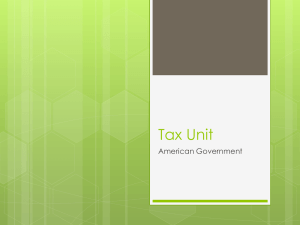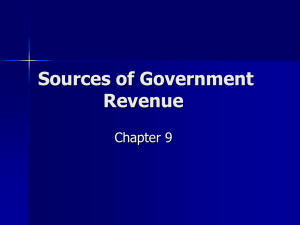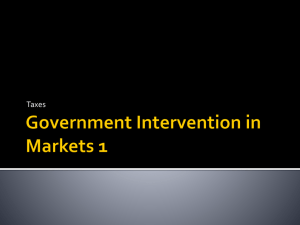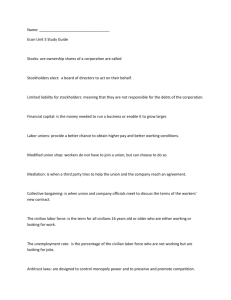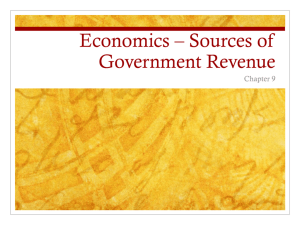Public revenues
advertisement
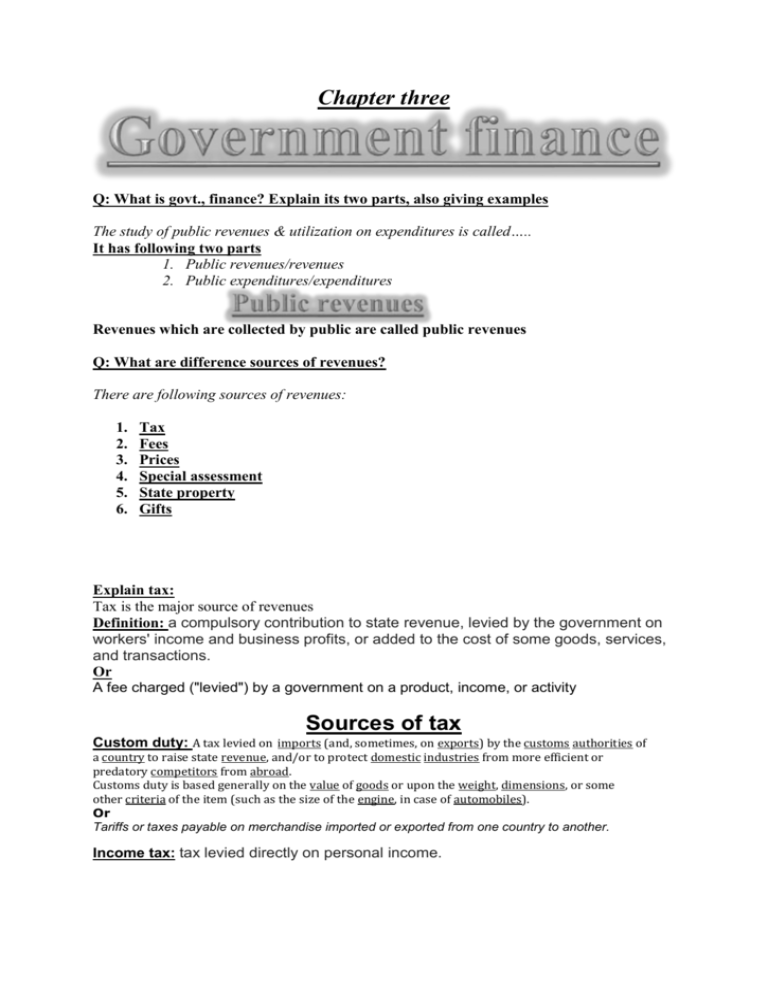
Chapter three Q: What is govt., finance? Explain its two parts, also giving examples The study of public revenues & utilization on expenditures is called….. It has following two parts 1. Public revenues/revenues 2. Public expenditures/expenditures Revenues which are collected by public are called public revenues Q: What are difference sources of revenues? There are following sources of revenues: 1. 2. 3. 4. 5. 6. Tax Fees Prices Special assessment State property Gifts Explain tax: Tax is the major source of revenues Definition: a compulsory contribution to state revenue, levied by the government on workers' income and business profits, or added to the cost of some goods, services, and transactions. Or A fee charged ("levied") by a government on a product, income, or activity Sources of tax Custom duty: A tax levied on imports (and, sometimes, on exports) by the customs authorities of a country to raise state revenue, and/or to protect domestic industries from more efficient or predatory competitors from abroad. Customs duty is based generally on the value of goods or upon the weight, dimensions, or some other criteria of the item (such as the size of the engine, in case of automobiles). Or Tariffs or taxes payable on merchandise imported or exported from one country to another. Income tax: tax levied directly on personal income. Sales tax: a tax based on the cost of the item purchased and collected directly from the buyer Excise duty: An excise or excise tax is an inland tax on the sale, or production for sale, of specific goods or a tax on a good produced for sale, or sold, within a country or licenses for specific activities Agriculture tax: It is not in Pakistan yet , it is the tex taken on production of feilds Property tax: Property tax is the annual amount paid by a land owner to the local government or the municipal corporation of his area. The property includes all tangible real estate property, his house, office building and the property he has rented to others. Types of tax There are followingf tax in different ways: Direct & indirect tax: A direct tax will refer to any levy that is both imposed and collected on a specific group of people or organizations. Direct Taxes examples: 1.Income Tax 2.wealth tax etc. Indirect taxes are collected from someone or some organization other than the person or entity that would normally be responsible for the taxes. Examples 1. Excise tax 2. Stamp duty 3.Sales tax Specific & ad valorem tax valorem tax (on value of products) An ad valorem tax (Latin: according to value) is a tax based on the value of real estate or personal property. An ad valorem tax is typically imposed at the time of a transaction (a sales tax or valueadded tax (VAT)), but it may be imposed on an annual basis (real or personal property tax) Specific: ( no. of unit) A Specific Tax is a system of taxation where the level of tax is fixed and independent of the value of the item being purchased. Proportional, progress & regressive tax: A regressive tax is a tax where lower-income entities pay a higher fraction of their income in taxes than do higherincome entities. (Regressive taxes can also be thought of as taxes where the marginal tax rate is less than the average tax rate. This will be discussed in more detail later.) A proportional tax (sometimes called a flat tax) is a tax where everyone, regardless of income, pays the same fraction of income in taxes. (Proportional taxes can also be thought of as taxes where marginal and average tax rates are the same.)
